64 Audio Trió Review - A Stronger Showing Than the Flagship?

64 Audio Trió Review
Written by Chrono
Introduction
It was not too long ago that I had a chance to review the 64 Audio Fourté, the company's long-standing flagship IEM. Recently, however, I've been listening to Fourté's younger sibling, the 64 Audio Trió, which has left a surprisingly strong (and positive!) impression on me. What I find intriguing about the Trió is that it delivers an experience that is remarkably similar to that of 64 Audio's flagship, but it's tuned better, and with a price tag of $2,299 it retails at nearly 2/3 of the Fourté's price.
What does it sacrifice to achieve its considerably less expensive price point? Not much! If you are interested in learning about what differentiates two premium IEMs from 64 Audio, then read on as I share my experience with the Trio and draw direct comparisons to the Fourté!
Sources and Music Used in Listening Tests
All the listening for this review was done on the Astell & Kern SR25 , and the Astell & Kern Kann Alpha . For the listening tests I used music from a wide variety of genres including Rock, Jazz, Classical, Acoustic, Hip-Hop, and latin. I played tracks from my own FLAC library, as well as from Qobuz and Tidal via Roon when using the Kann Alpha in DAC mode.
64 Audio Trió - Product Summary
- Reasons to buy
- Better Tonality than Fourte
- Strong Bass Response
- Very Good Soundstage
- Small, Comfortable Form-Factor
- Reasons not to buy
- Uneven treble
- Midrange Tuning Might Still be Too Dark for Some
 |
Get the 64 Audio Trio for the best available price at headphones.com. |
Accessories
Just like the Fourté, the Trió includes a leather case, a 4ft cable, as well as multiple sets of silicone and foam eartips. In this regard, there really isn't anything that I find sets the two IEMs apart.
Build and Comfort
Build-wise they’re once again seemingly identical; sporting the same, compact, lightweight aluminum chassis design–albeit in different colorways, of course.
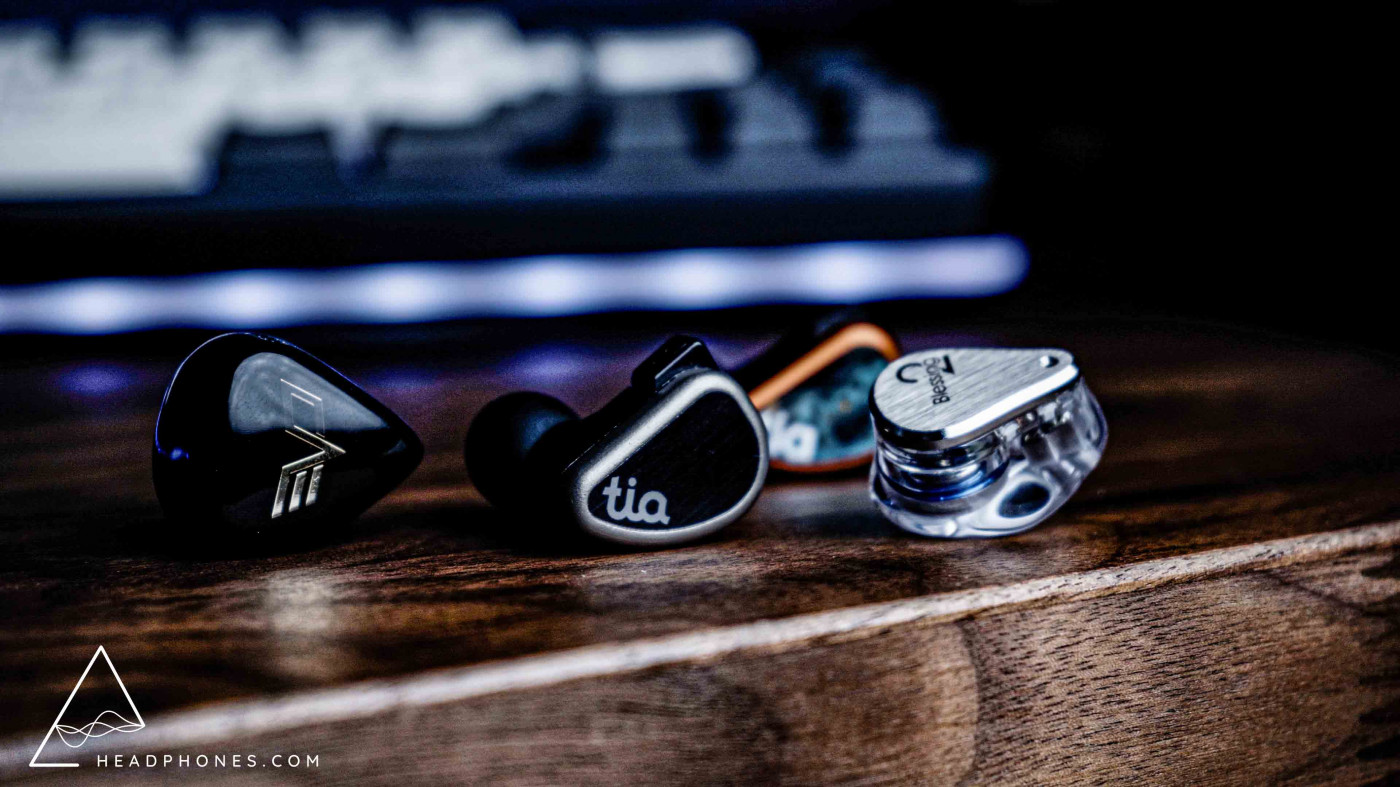
I mentioned this in my Fourté review, but I find this shell they use on 64 Audio’s IEMs to be one of the most comfortable I’ve tried, and that’s because when compared side-by-side with things like the Legend Evo from Empire Ears, these make for relatively small In-ears, which I find makes them a lot less fatiguing to wear over extended periods of time. So if your ears are on the smaller side, these might be of interest to you!
Sound
The Trió, like the Fourté, is using 64 Audio’s tubeless in-ear audio or “tia” design methodology with the only major difference between them being that–as suggested by the name–the Trió is using three drivers as opposed to four, so it cut out one of the balanced armature drivers while keeping the dynamic driver for mid and low tones.
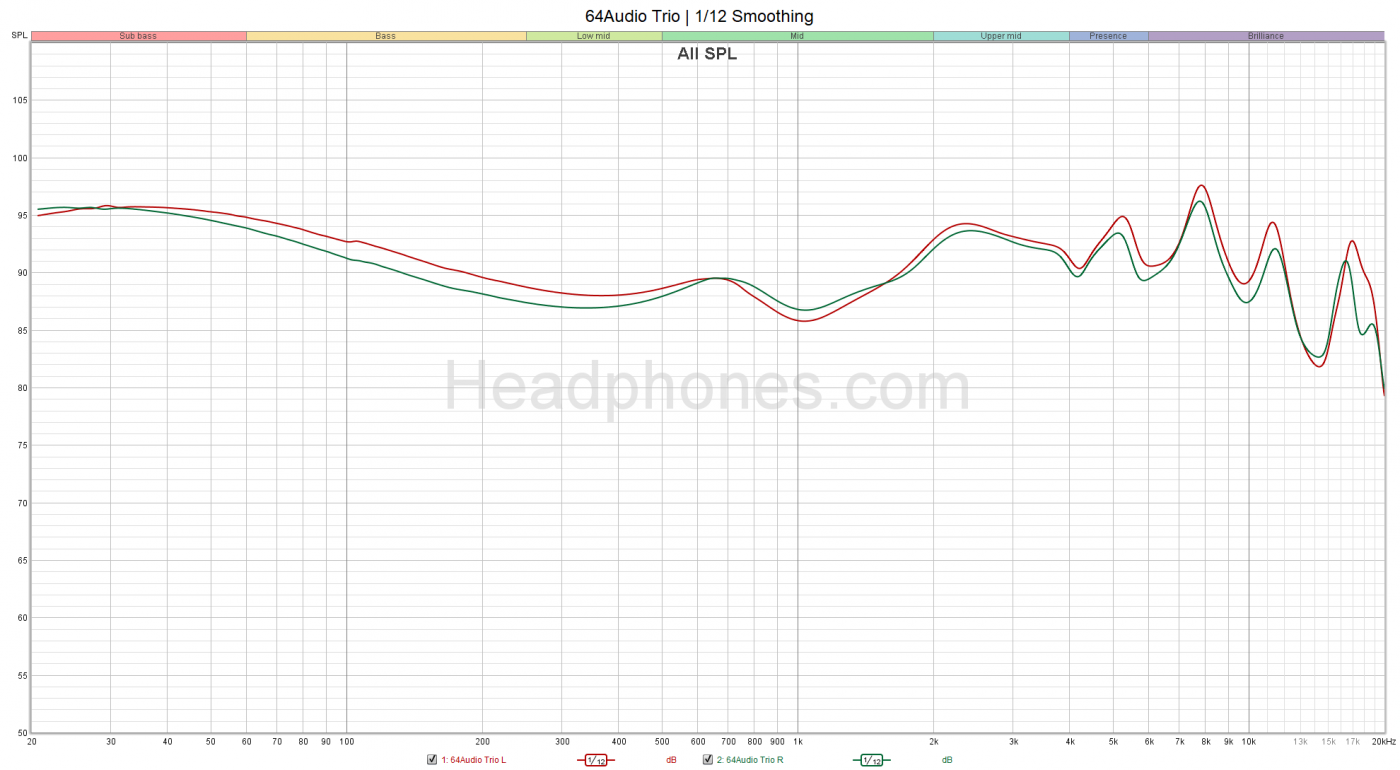
Frequency response of the 64 Audio Trio taken by Fc-Construct (check out their review here). Measurement taken with an IEC-711 clone microphone. Comparisons can only be made relative to other measurements taken by this specific microphone. A peak at about 8 – 10 kHz is likely an artifact of the measurement rig and may not exist as depicted here. Measurements above 8 kHz are not accurate. If possible, reference multiple measurements.
First Impressions
What I find interesting about the sound here is that a lot of the prominent features from the Fourté’s frequency response are actually also present here on the Trió, yet at the same time the Trió is an IEM that I actually found to be quite a bit more balanced than the Fourté, and it’s one that I could get a lot of enjoyment out of without the need for any EQ whatsoever because it doesn’t have one major issue that the Fourté does.
Bass
The bass is still very present on the Trió because it’s got an elevated but not aggressive bass shelf. And like on the Fourté there is some added warmth on the Trió’s bass response due to the bass shelf settling later at around 180hz, instead of at around 120hz. Just like on the Fourté, this effect is subtle, but can still be heard and well you can see it on measurements of the Trió.
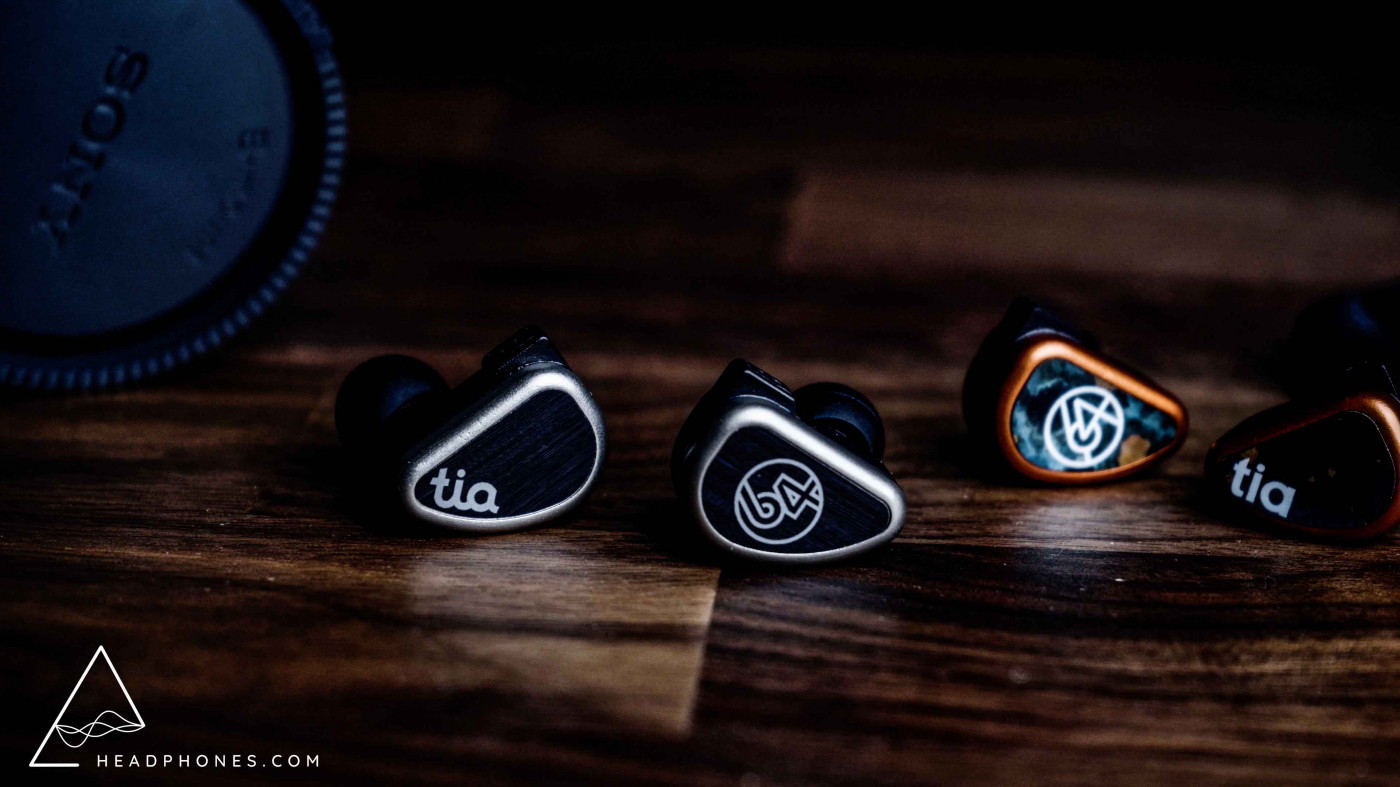
Mids
When we get to the mids this is where things really start to shape up differently when comparing the Trió to the Fourté. The problem on the Fourté was that while the lower mids were rich and well-defined, the upper mids were completely gone–absolutely zero presence in that region of frequency response. That, however, is not the case on the Trió. Now, admittedly the upper mids are still a little bit on the blunted side here since 1.5 and 3K do dip by about 1-2dB, but this is still not enough to make the mids sound recessed in any way shape or form–at least to me. So what really improves on the Trió when compared to the Fourté is that the midrange is adequately contoured, with vocals and instruments not feeling awkwardly muffled or stuffy-sounding. It’s not a reference midrange, mind you, but it is quite a bit more natural-sounding and, for my tastes, a lot more enjoyable.
Highs
Moving along to the highs, this is where things are again a little reminiscent of the Fourté since the Trió also has a distinct peak in the upper mids to lower treble transition at 5K, making the Trió a bit shouty in that region while also introducing some glare. And then at 8K there is again a peak there that introduces some sizzle and puts a slight stress on consonants. One thing to note here, though, is that since the midrange on the Trió is not recessed, these elevations in the treble are nowhere near as pronounced as they were on the Fourté, so they’re not as fatiguing to listen to, even for someone like me who is usually quite treble sensitive. Other than that, I noticed that the Trió has excellent treble extension, although I did find that the air frequencies to be just a tiny bit too energetic, which made vocals and things like cymbals glisten more than I would have expected–although this is more of a preference thing.
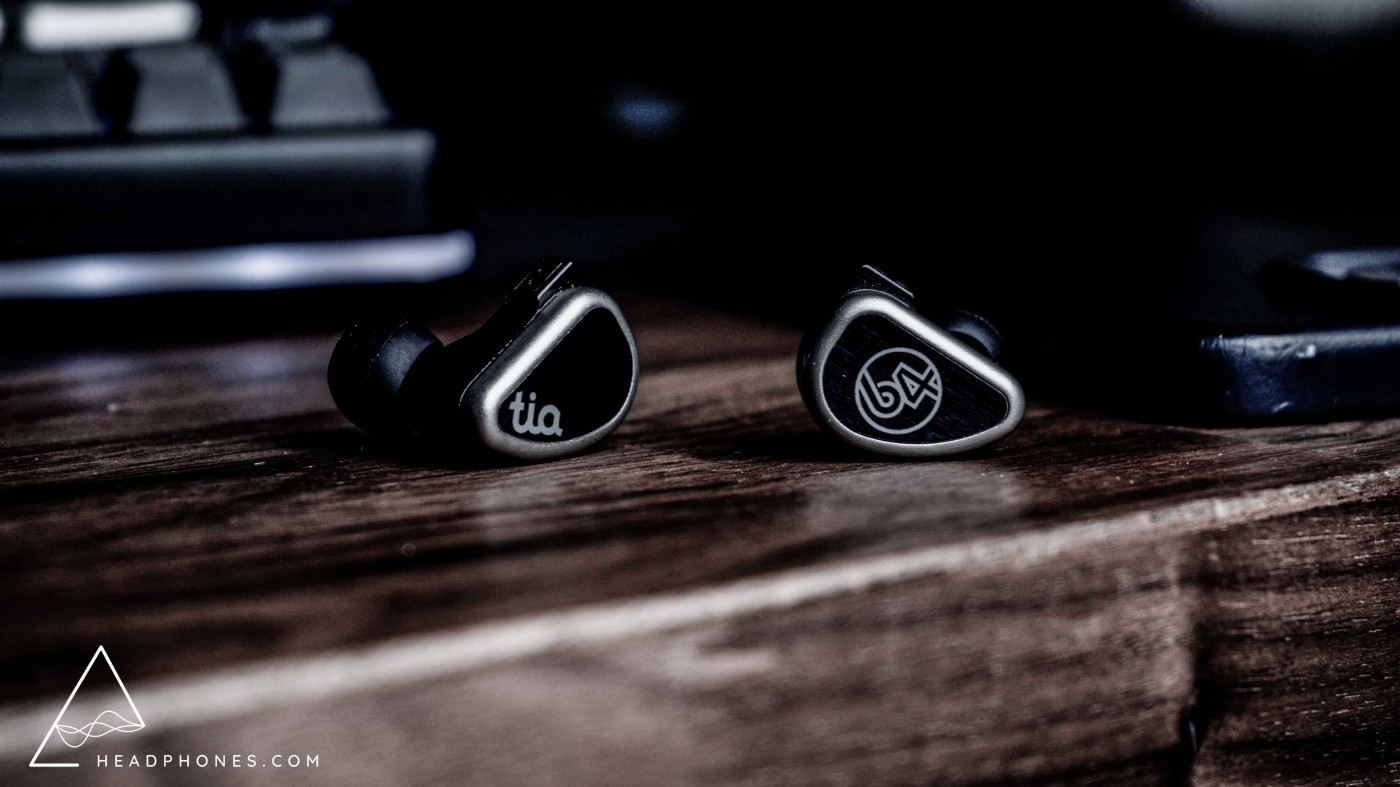
Love our in-depth reviews?
We test and review hundreds of headphones every year. Sign up to get the latest news, reviews, guides, and more in your inbox. Join the 60,000+ like-minded audio lovers who love our newsletter!
Resolution
For detail retrieval and overall sense of image clarity, the Trió delivers performance that almost matches that of the Fourté as well of the Legend Evo. For me, it doesn’t seem to achieve the same level of precision as the other two, but the Trió is without a doubt adept at creating a stable image of the music, it’s a very resolving IEM nonetheless.
Soundstage, Imaging and Layering
Now I think really what makes the biggest difference in the Trió and Fourté is the soundstage. The Trió has a soundstage presentation that, for an IEM, I’d consider to be excellent–it’s up there with the Legend Evo. However, it definitely comes up short when compared to the Fourté, which has an outlandishly good soundstage with an excellent sense of depth and instrument separation, especially after EQ. I also found the imaging on the Trió to be not quite as precise as on the Fourté. For music it’s perfectly fine of course, you’ll get a good idea of where things are coming from when using these, but I tried playing valorant with these on and I was practically throwing because they just weren’t accurate enough for that application–though I guess I’m not really sure who’d buy such high-end audio equipment for gaming.
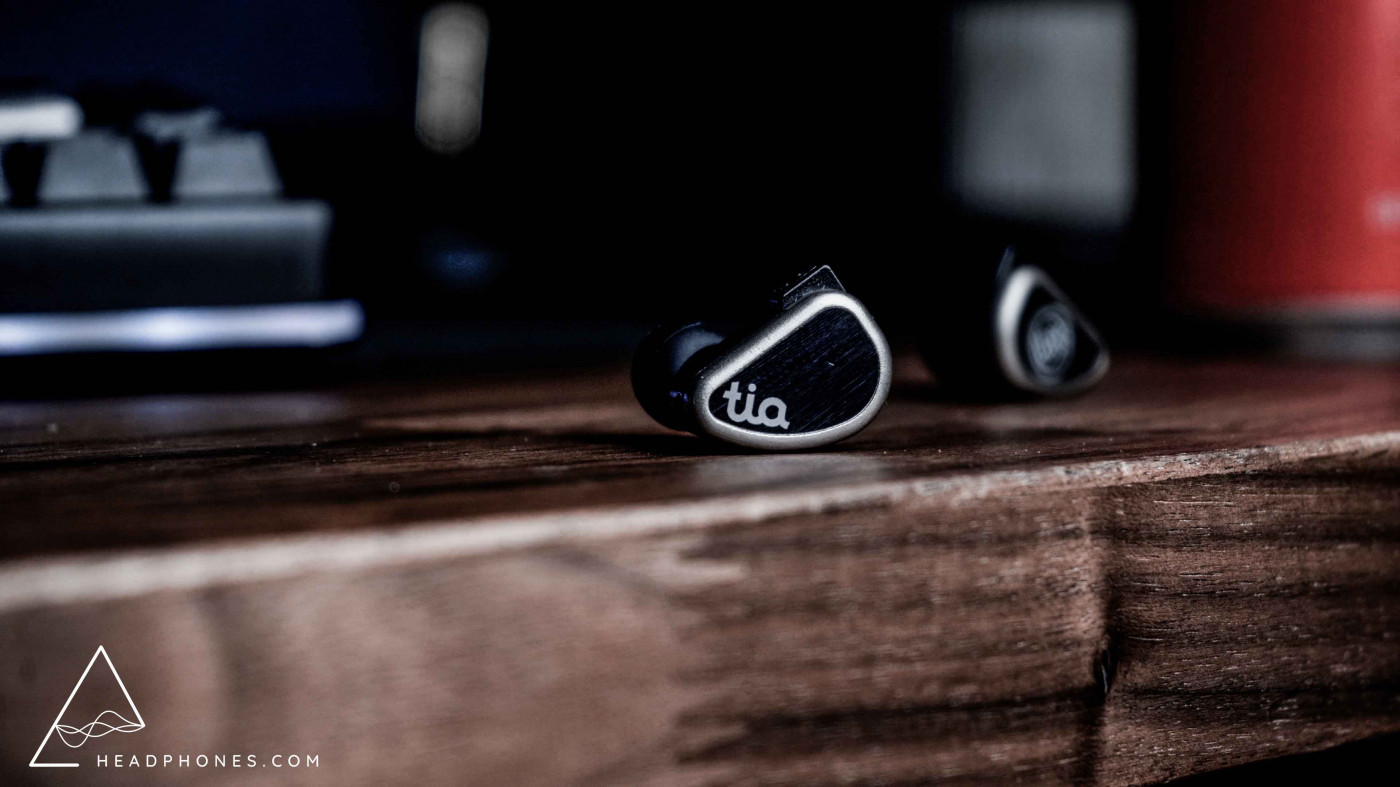
Conclusion
I’m well aware that the Trió is a significantly less expensive IEM than the Fourté, but honestly, if you don’t take EQ into account--which I think most people don’t--the Trió feels to me like an improvement over the Fourté. They’ve got similar characteristics in their frequency responses, but the Trió fixes the Fourté’s midrange issues, making it a significantly more enjoyable IEM to listen out-of-the box, without EQ. Sure, you give up a bit of the soundstage, but for just listening to music, I think that my nod goes to the Trió, and overall it’s an IEM I’d be happy to recommend if you’re out looking for a really high-end in-ear listening experience.
- Chrono
